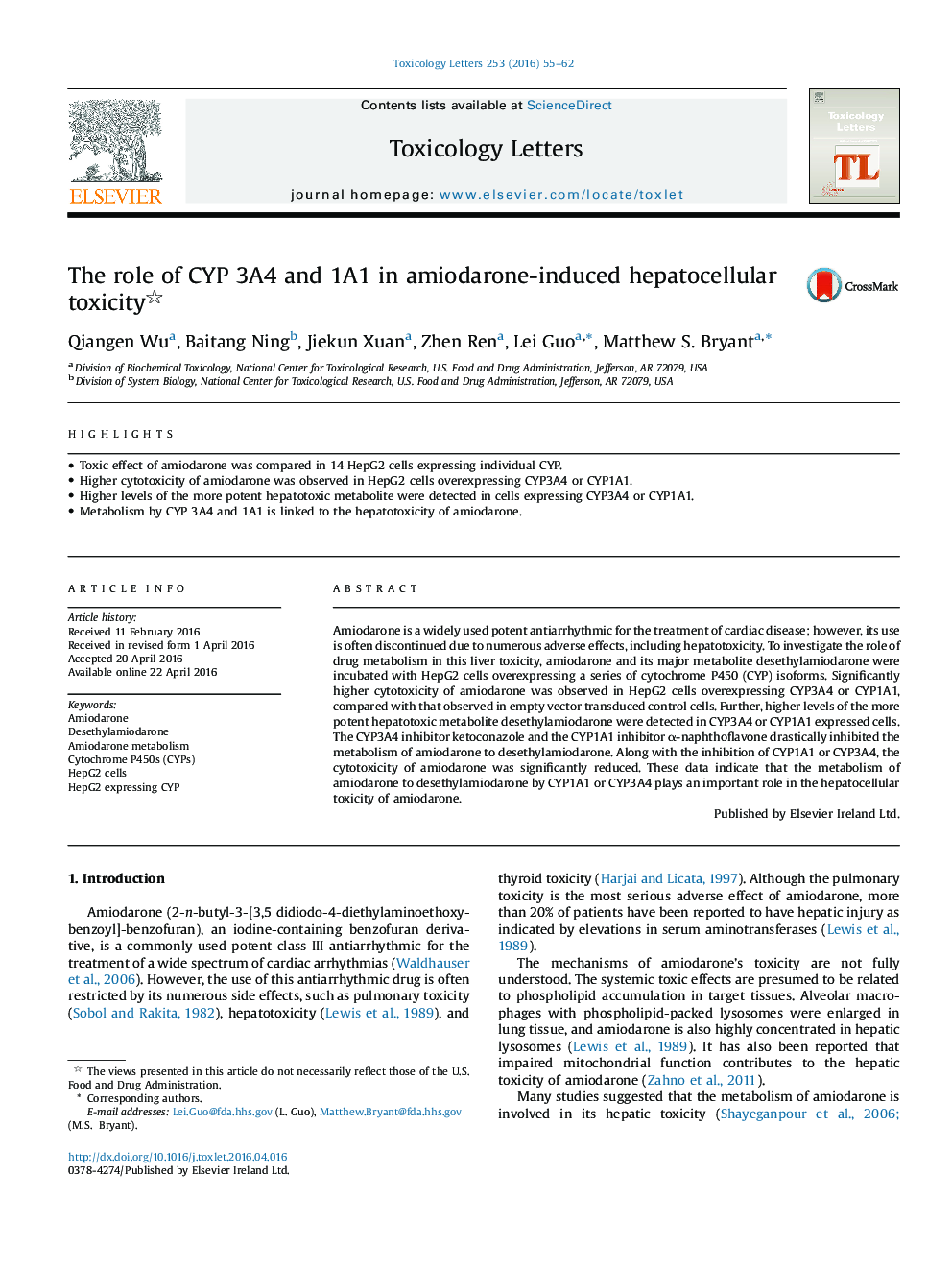| Article ID | Journal | Published Year | Pages | File Type |
|---|---|---|---|---|
| 2598484 | Toxicology Letters | 2016 | 8 Pages |
Abstract
Amiodarone is a widely used potent antiarrhythmic for the treatment of cardiac disease; however, its use is often discontinued due to numerous adverse effects, including hepatotoxicity. To investigate the role of drug metabolism in this liver toxicity, amiodarone and its major metabolite desethylamiodarone were incubated with HepG2 cells overexpressing a series of cytochrome P450 (CYP) isoforms. Significantly higher cytotoxicity of amiodarone was observed in HepG2 cells overexpressing CYP3A4 or CYP1A1, compared with that observed in empty vector transduced control cells. Further, higher levels of the more potent hepatotoxic metabolite desethylamiodarone were detected in CYP3A4 or CYP1A1 expressed cells. The CYP3A4 inhibitor ketoconazole and the CYP1A1 inhibitor α-naphthoflavone drastically inhibited the metabolism of amiodarone to desethylamiodarone. Along with the inhibition of CYP1A1 or CYP3A4, the cytotoxicity of amiodarone was significantly reduced. These data indicate that the metabolism of amiodarone to desethylamiodarone by CYP1A1 or CYP3A4 plays an important role in the hepatocellular toxicity of amiodarone.
Related Topics
Life Sciences
Environmental Science
Health, Toxicology and Mutagenesis
Authors
Qiangen Wu, Baitang Ning, Jiekun Xuan, Zhen Ren, Lei Guo, Matthew S. Bryant,
